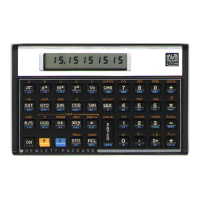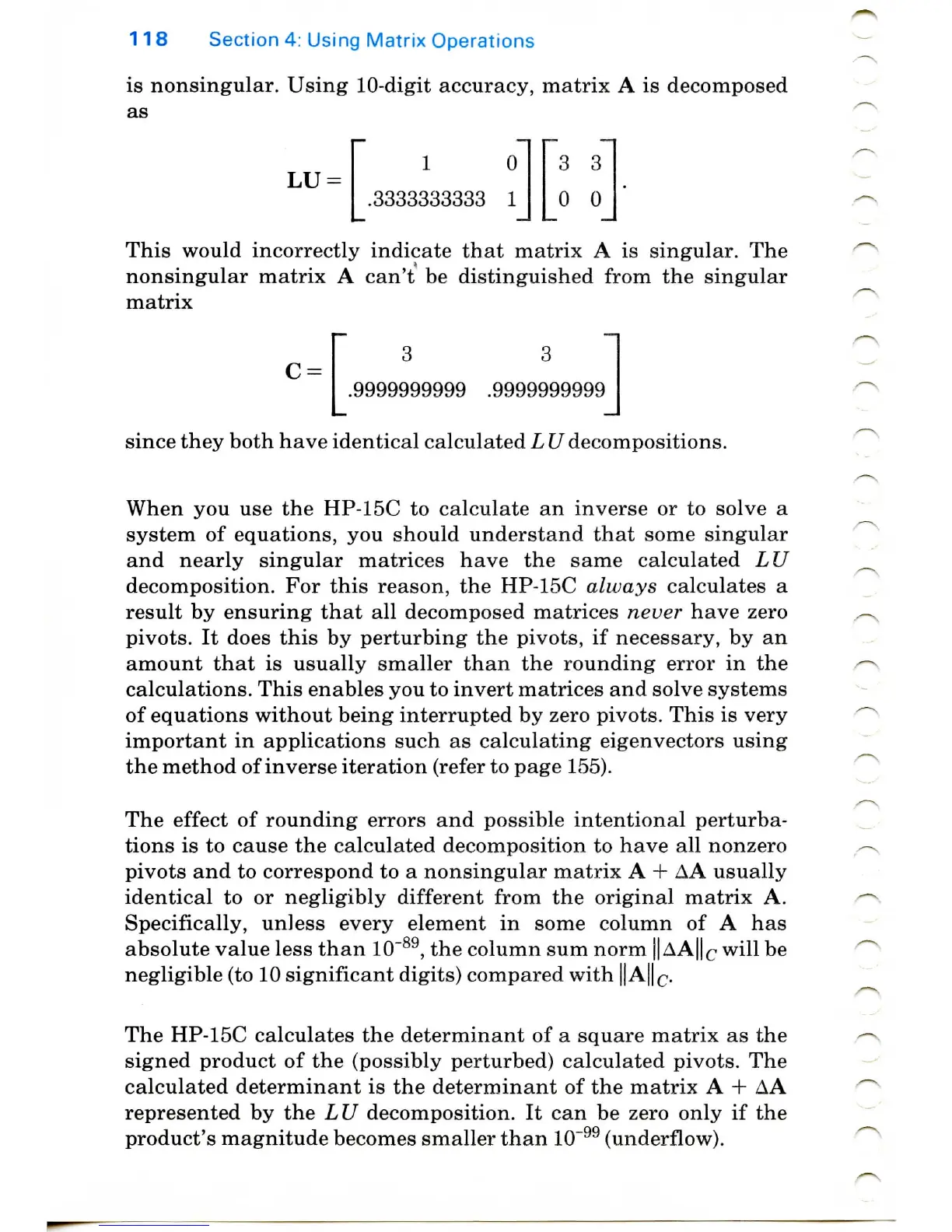118
Section
4:
Using Matrix
Operations
is
nonsingular. Using
10-digit
accuracy, matrix
A is
decomposed
LU
=
1 0
.3333333333
1
3 3
0 0
This
would
incorrectly indicate
that
matrix
A is
singular.
The
nonsingular matrix
A
can't
be
distinguished
from
the
singular
matrix
C
=
3 3
.9999999999
.9999999999
since they both have identical calculated
LU
decompositions.
When
you use the
HP-15C
to
calculate
an
inverse
or to
solve
a
system
of
equations,
you
should understand
that
some singular
and
nearly
singular
matrices
have
the
same calculated
LU
decomposition.
For
this
reason,
the
HP-15C
always calculates
a
result
by
ensuring
that
all
decomposed matrices
never
have
zero
pivots.
It
does
this
by
perturbing
the
pivots,
if
necessary,
by an
amount
that
is
usually smaller
than
the
rounding error
in the
calculations.
This
enables
you to
invert matrices
and
solve systems
of
equations without being interrupted
by
zero
pivots.
This
is
very
important
in
applications such
as
calculating eigenvectors
using
the
method
of
inverse iteration
(refer
to
page 155).
The
effect
of
rounding errors
and
possible intentional perturba-
tions
is to
cause
the
calculated decomposition
to
have
all
nonzero
pivots
and to
correspond
to a
nonsingular matrix
A + AA
usually
identical
to or
negligibly
different
from
the
original
matrix
A.
Specifically,
unless
every element
in
some column
of A has
absolute value
less
than
1CT89,
the
column
sum
norm
||AA||c
will
be
negligible
(to 10
significant digits) compared with
||A||c.
The
HP-15C calculates
the
determinant
of a
square matrix
as the
signed product
of the
(possibly perturbed) calculated pivots.
The
calculated determinant
is the
determinant
of the
matrix
A + AA
represented
by the LU
decomposition.
It can be
zero only
if the
product's magnitude becomes smaller
than
10~"
(underflow).

